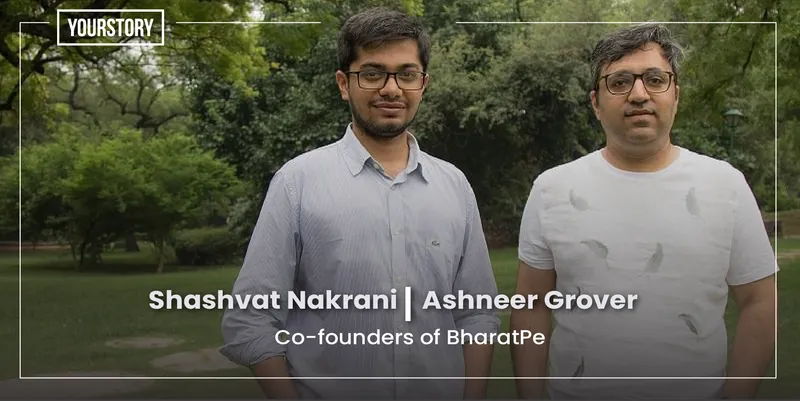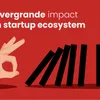BNPL is an urban consumer product, needs to be universal: Ashneer Grover on launch of BharatPe’s postpe
In an exclusive conversation with YourStory, BharatPe Co-founder Ashneer Grover talks about the launch of postpe, the fintech’s Buy Now Pay Later product, and why the fintech startup is working on a model unique to India.
When Ashneer Grover and Shashvat Nakrani founded in 2018, the startup definitely wasn’t the first payments player in the market. Leading fintech players such as PhonePe, Paytm, and Google Pay were already operating across India.
But BharatPe didn’t let that be a stumbling block in its path. The fintech now does close to five million transactions every day, with an annualised process value of $12 billion.
Three years down the line, the unicorn has now entered the ‘Buy Now Pay Later’ (BNPL) segment with the launch of postpe. The platform provides credit to customers to ‘buy now, pay later’. Customers can download the postpe app from Play Store and avail interest-free credit of up to Rs 10 lakh.
The team says postpe is a first-of-its-kind BNPL product that is not limited to big-ticket purchases, but can also be used for micro-purchases. BharatPe aims to facilitate a loan book of $300 million on postpe in the first 12 months, for its lending partners.

In a conversation with YourStory, Ashneer talks about the company’s BNPL product, their differentiator, and plans for the future.
Edited excerpts from the interview:
YourStory (YS): Why did you launch BNPL and how does your product differ from the others?
Ashneer Grover (AG): We look at BNPL differently. So far, it has been an urban consumer product, because people are copying a western model. But India is a unique country and you need to build models unique to India.
So far, BNPL has only helped people who do not need credit to buy iPhones. It isn’t creating value; you need to give credit to people to those who need it. Currently, BNPL isn’t solving an affordability problem. BNPL needs to be a universal product.
It is a business bound to fail as the Indian consumer needs choice; the credit needed isn’t just for a phone, some need for monthly purchases. People may spend more on a food bill and may need credit for that.
If you are buying veggies from a vendor, how do you pay on credit? QR button on our app, scan the QR code and pay the bill at the end of the month. You have the choice of converting it to an EMI or pay full.
The next phase of growth is credit. Movement of money has become easy, but credit has to be easily available. The next big wave is going to be credit on UPI.
To start with, we already have a lending option for our merchants. We already have an idea of the transactions they make, and credit is given on that. In a year, we have given 350,000 loans, and disbursed Rs 2,000 crore.
If a merchant does Rs 30,000 worth transactions with us in a day, we give them a loan of Rs 1 lakh. They can repay us in a year, paying back Rs 1,24000, at an interest rate of two percent a month.
You don’t have any bullet repayment. Every day except Sunday, we deduct Rs 400 from you; in a year, your loan will be repaid. On a monthly basis, we are lending out Rs 300 crore.
YS: What next for BharatPe?
AG: We are launching our bank and registering our small finance banking licence, which is in process with the RBI.
YS: From the QR code to other products, tell us more?
AG: With the merchant base we have, we also have an investment product. If the merchants keeps the money with us on the app, they can earn 12 percent. Today, by reach and value, we own close to 40 percent market share of offline transactions.
For a company worth $3 billion, we have spent only $100 million on customer acquisition cost; we have spent the least among all unicorns. Globally, nobody would have built a business of this scale by spending lesser money than us. We made it free to merchants because it made sense; the government has made our cost zero.
The interoperable nature of UPI and its entire structure made us believe that merchants would want their transactions to be at zero percent commission.
In the first 1.5 years of the QR code’s launch, it was selling by itself due to being free. However, banks were still charging the startup 0.6 percent for the transaction. This changed in January 2020, when the government was looking to increase digital payments.
The QR code is our top of the funnel; we have over $10 million worth of transactions on our QR code. The other premium product is the Bharat Swipe, our PoS machine. The merchant buys it for a flat fee of Rs 5,000 and when a customer transacts on the machine, they don’t get charged an FDR unlike other machines.
If the consumer swipes Rs 10,000, you will see a balance of Rs 10,000 on the app; you will only be charged a commission of one percent if you transfer the money to your bank account immediately. If you keep it on the app for 15 days, there is zero commission.
We have made card acceptance a zero to one percent business. Prior to us, it was an expensive deal of 2.5 percent commission and a monthly rental.
We turned the model on its head, and have more than 100,000 plus devices and merchants. We do $2.5 million value of transactions; this makes $12-13 million between QR and Swipe.
Merchants now are unwilling to pay a commission for a UPI. Merchants are also looking beyond QR and at new things, and providing credit against payment volumes has become an expectation. You need to launch beyond payments.
Edited by Teja Lele









